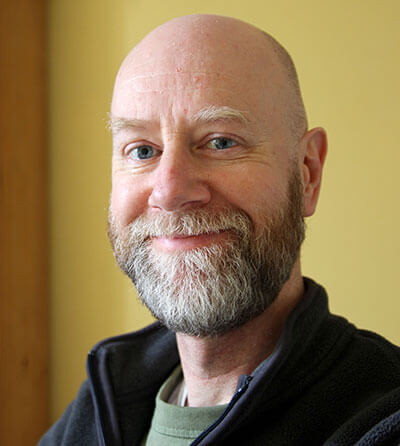|
FARINGDON FOLLIES
Faringdon Dramatic Society Buscot Park Theatre, Buscot Park, Faringdon, SN7 8BU 13-16 June 2018 Farringdon Follies was devised by members of Faringdon Dramatic Society to mark two important anniversaries: it's 800 years since Faringdon was granted its market charter, and 70 years since the founding of Faringdon Dramatic Society itself. Conscious that their audiences wanted to be entertained rather than given a history lecture, FDS decided to combine scenes from the town's eight centuries of history with a re-enactment of how FDS actually came up with this show. So after the rather catchy opening song (This is Our Town) we found ourselves watching a discussion between the actors and director, at an FDS rehearsal, about what should be included in the show – the show we were actually watching. I must admit that, after this scene, my heart sank somewhat and the following thought passed through mind: are we in for two hours of this? I'm happy to report that it improved and my worst fears were not realised. The play-within-a-play structure is one that's been successfully used many times in drama over the centuries of course. One reason why I had initial reservations about this production, however, was because I've recently seen too many amateur productions that feature an amateur drama production within the play itself. That genre is in danger of being done to death. Fortunately, FDS gave us plenty of other fare during the evening. The English Civil War featured more than once, and understandably so, given that Faringdon, a Royalist stronghold, was besieged by Cromwell's troops, during which it lost its church spire to Roundhead artillery. One of the cast, Peter Webster, had, we learned, previously written a play called Colonel Lisle's Decision. This was re-presented to us. It was the story of two townsfolk, childhood sweethearts, who had manned the town's defences and fought heroically against the Cromwellian attackers. But they had been seen exchanging kisses whilst on active duty – a serious breach of regulations. In the end, justice prevailed and the young man and woman had their offence dismissed by their colonel on condition that they married soon. I also enjoyed The Ballad of Hampden Pye, the story of a man who got his head shot off by a ship's cannon, thanks to the plotting of his step-mother, and whose headless ghost haunted Faringdon churchyard for many years. We had the story of the monks who founded a monastery in Faringdon at the time of the town's market charter in 1218. Their history was sung to us, amusingly, in mock plainchant, as four grey-cowled monks processed around the stage. We also learned about the terrible lives of those condemned to spend their years in the Faringdon Union Workhouse in the nineteenth century. Photographs of the awful place were projected on to a back screen. This was performed as a song, to the the tune of There's No Place Like Home. The irony was further emphasised by having a middle-class Victorian couple gathered at their drawing room piano, singing the song, while a young woman in workhouse clothes sat downstage, tearfully singing an alternative version that told of her miserable existence. The second act focused on twentieth and twenty-first century events in the town. There was an engaging piece about Faringdon Folly, that told the story of its construction by the eccentric Lord Berners and gave us accounts by townspeople of what the Folly meant to them. For those not in the know, the Folly stands on top of a hill surrounded by woods, and is regularly open to the public. It's a favourite place to walk humans and dogs alike. I was quite taken by a re-imagined scene from Lord Berners' life: a weekend at Faringdon House with house guests that included Salvador Dali and Noel Coward. It had the feel of a scene from a Noel Coward play: light, frothy and witty. The 'rehearsals' of the FDS that peppered the evening started to establish a pattern, with one or two running jokes. They were also used to tell episodes of the town's past and the history of the dramatic society itself, which worked well, I think, because, apart from any other consideration, the actors were not there principally to act as themselves (which they had been in the opening scene) but assumed imaginary versions of themselves. What I would have liked to see in the show's printed programme was a list of which roles each person played, instead of the bald list of names in order of speaking. This is probably a selfish complaint by the reviewer, but it means I cannot name names and give credit where it is due. The set design was simple, relying on furniture, props and lighting to establish the mood and place. Given the very limited dimensions of the delightful, but bijou, Buscot Park Theatre, that seemed an eminently sensible approach. There was good use of projected photographs, particularly in the Memories of the Folly section and the workhouse scene already mentioned. This highlighted the considerable research that must have gone into sourcing those pictures from local residents. Faringdon Follies was something different – a genuine piece of community theatre celebrating local identity and a strong sense of place and rootedness. The danger of presenting such a topic is to descend into gentle self-mockery or sentimentality, so that the subject itself becomes degraded. Co-directors Debbie Lock and Carolyn Taylor avoided these pitfalls and gave this non-Faringdonian an entertaining and informative evening.
0 Comments
Leave a Reply. |
About the Author
Mike Lord has been involved with amateur theatre for over twenty years, mainly as an actor but also, more recently, as a director. Archives
July 2019
Contact me
Please use the Contact Form for anything apart from comments on blog posts. |


 RSS Feed
RSS Feed
